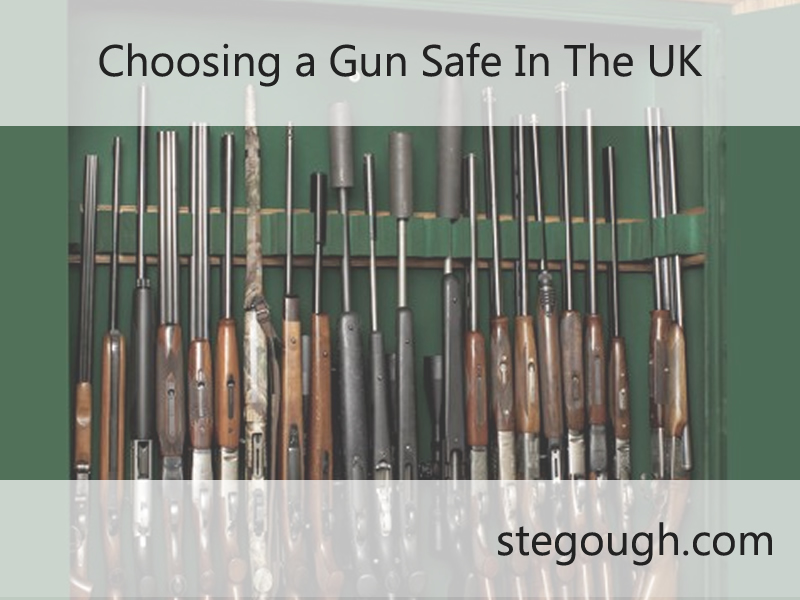Preface
I recently received an email from a US locksmith company (Locksmith Sarasota) telling me that my site was “Good Stuff”. Why thank you!
In this email they went on to talk about how important gun safes are to anyone who owns, or is looking to own firearms, and I couldn’t agree more. Firearm safety begins at home, in the case of securing your firearms, absolutely. So they put together a blog describing the key aspects of what to look for and what to consider when choosing a gun safe.
I’ll link to that below.
The reason i’m writing my own blog, in answer to their blog is simply because, unlike in the USA, the UK have rather stringent rules that must be obeyed by anyone wishing to own firearms. Those rules include a minimum standard of security that must be adhered to by anyone wishing to obtain a firearms or shotgun license. So I’ll go into those stipulations below, and then I’ll link through to the blog written by Locksmith Sarasota so you can be armed with the information you need on a minimum level of security for choosing a Gun Safe in the UK.
The Law
UK Firearms rules 1998 prescribe a safekeeping condition attached to all firearm and shotgun certificates, so much so that non compliance of these conditions can lead to a maximum penalty of up to 6 months in prison, a fine, or both. Not only does this condition apply to firearms, it also applies to “Section 1 Ammunition”, that is to say any legally owned live round of rifle or pistol ammunition. There are other types, such as Section 5 ammunition (Armour piercing for example) which would also be subject to this condition, but you should check your certificate for any stipulations. Shotgun Ammunition (Except Slugs and special rounds) do not carry the same stipulation.
The safekeeping condition as mentioned is as follows [Items named above] must be stored securely to prevent, so far as is reasonably practicable, unauthorised people taking or using them. Any other person who does not hold a firearm or shotgun certificate is included in the term ‘unauthorised’.
What constitutes as ‘safe storage’ in the UK is not legislated in law, however the Home Office have written guidance for police officers of what they consider strong enough and ‘approved’.
Gun Safe UK Guidance
The police when gauging whether or not to issue a certificate will assess the circumstances of each case individually, usually this involves them visiting your house and checking that what you have is safe, secure and installed satisfactorily (For example, you havent used the incorrect type of screws into an un-sound wall so the cabinet could be removed with little force).
When considering each case, there are 3 levels of security that are generally accepted.
Level 1
Level 2
Level 3
Gun Cabinets in the UK
- It should be made from sheet steel at least 14 swg (standard wire gauge) (2 mm) thick. All seams should be continuously welded, or the cabinet body formed by bend construction.
- All hinges should be on the inside of the cabinet, but if they are external or exposed, then hinge bolts, blocks or anti-lever bars should be provided.
- Lock mechanisms should be on the inside of the cabinet. The lock should contain at least 5 levers to BS 3621 standard or equivalent. Alternatively, good quality hardened padlocks and staples should be fitted to the cabinet.
- Full-length side hinged cabinets should have two locks at points one third and two-thirds the height of the cabinet.
- The cabinet may contain, or have attached, a separate lockable container to store ammunition.
It would be my opinion that although these requirements are guidance, some “store-bought” gun safes are made to these as goals, rather than something to be bested. Over engineering, using thicker and harder materials and locks to slow down would-be criminals is always a good thing so consider going for over-engineered cabinets rather than those that just pass the bar, where possible.
Other methods of security
The UK Government also consider other methods of security enough, that could be;
Gun Clamps
Steel Cables
Gun Rooms
These alternative methods contain their own set of guidance surrounding them, and personally I would always go for a cabinet over the first 2, and if you have room, a dedicated Gun Room would always come top of the list, however I will not go into the guidance surrounding their construction, at this time.
Gun Safe Placement
The Home Office has also given guidance on placement of Gun Safes, whilst most of this should come as common sense if you are trying to make something secure, they cover it to make certain.
Any security device should be securely fixed to the fabric of the building.
- For preference it should be in a room or area that does not have direct access to the outside of a building.
- It should not be in a garage, shed or other outside building, except in certain circumstances.
- When considering large or heavy gun cabinets, you should consider the load bearing strength of your floors.
- Wherever possible, it should be fixed to a wall that is built from bricks or concrete blocks or to the floor
- The container should be out of sight (unless the firearm is held for display purposes). If it is in a corner, it is more difficult for a thief to attack it.
- You should avoid fixing the container near any heat source.
Further Gun Safe Reading
As mentioned at the start of this blog, Locksmith Sarasota sent me an email containing a link that goes further into this subject, and although is aimed at the US market, the points raised about security still apply. You can read more about gun safe selection on their website: How to Choose a Truly ‘Safe’ Gun Safe for Your Home














2nd August 2017 at 6:21 pm
Ste,
Great article! I like how you stated the importance of the laws that govern each individual countries. Laws are in place to protect the majority of people, and with that in mind, it’s essential to know how we can protect the people (especially if it involves guns). I love shooting guns, but I do hate hearing about gun accidents (that’s not fun at all).
7th August 2017 at 9:39 am
I believe gun safe must be mandatory for each firearm owner. However, the problem is the heavy safes are early impossible o move and the handgun safes, can be opened by small kids by simply dialing random numbers. I am not sure about UK, but in the US, there have been several cases when children fired a gun that they found in a safe.
7th August 2017 at 11:25 am
Hi Nadya, thanks for your comment.
In the UK, a safe or a way of proving that you have secured your firearms is mandatory, hence the article.
Heavy to move is good. It makes them more secure.
Small kids should not be able to access safes in this country as only the owner of the firearms can have access to the safe. if it’s simple enough for a kid to accidentally get into, it’s not secure enough, in my humble opinion.
Stay safe 🙂